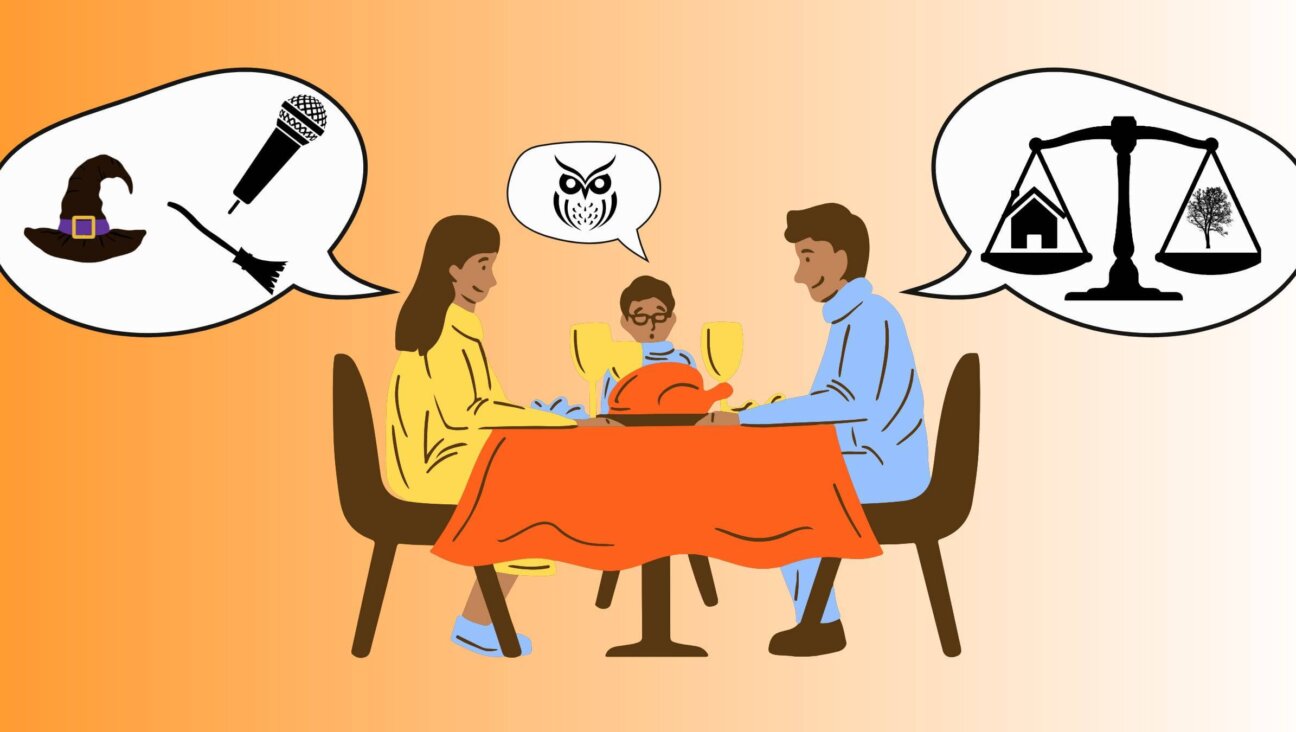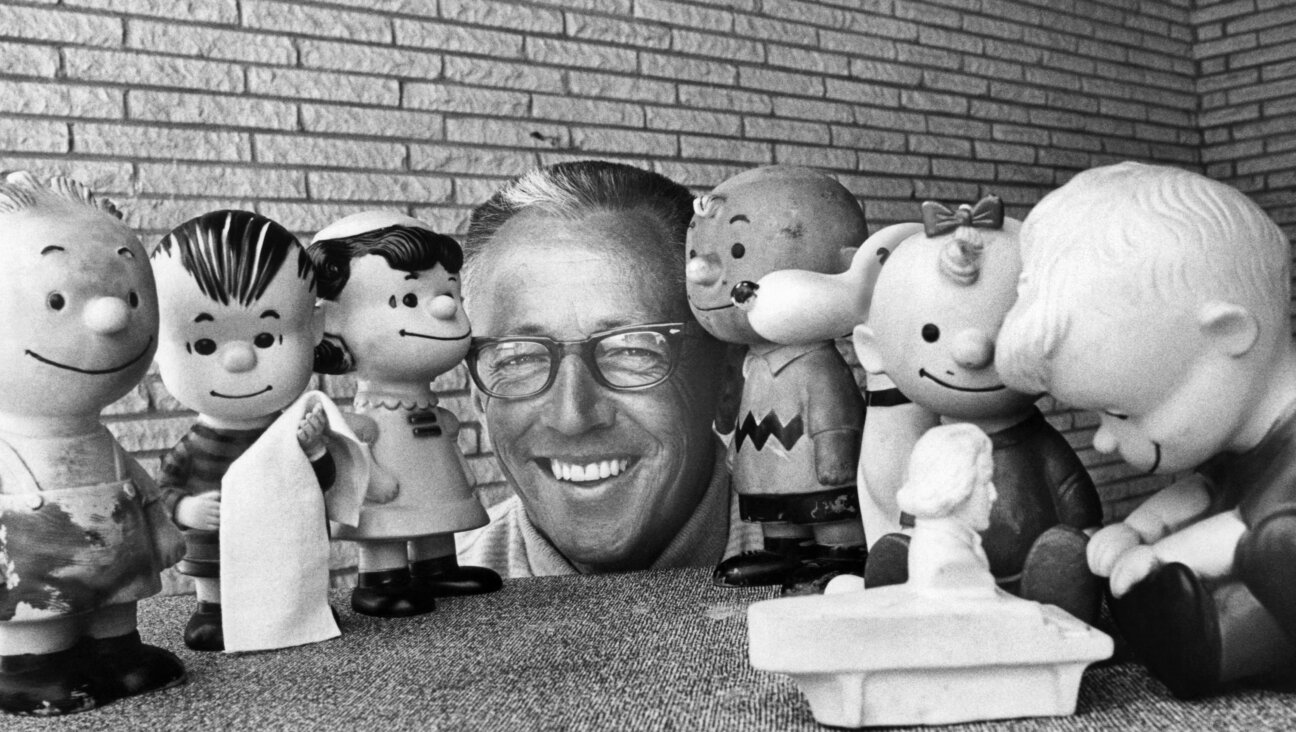Stepping Into American Life
Been to a Jewish wedding of late? If you, like me, have had the good fortune to attend one recently, surely you’ll agree that one of its most striking features is the range of sounds emanating from the bandstand, from the upbeat strains of klezmer and Israeli music to the rhythms of Motown, the twang of bluegrass and the sensuality of a Latin beat. It’s no wonder, then, that within the space of an evening, guests are just as likely to swing their hips, do-si-do and cha-cha-cha as they are to form a circle, dance the hora and hoist up the bride and groom in a chair.
Making for great fun, this exuberant mix of musical styles and dance steps also reflects the heterogeneity, the wholesale embrace of cultural synthesis, characteristic of contemporary Jewish life. But then, the musical styles and dance steps fancied by earlier generations of American Jews say as much about their culture as our choices say about ours. Whether it was Israeli line dancing in the 1990s, disco fever in the ’70s, the twist in the ’60s, or the hora and the rumba of postwar America, each generation has laid claim to a distinctive musical and kinetic identity.
Much like shards of pottery or fragments of ancient texts that help historians to reconstruct the past, the sounds and movements of yesteryear are also forms of history whose retrieval is critical to our notions of the American Jewish past. Fortunately, a number of American Jewish institutions are doing just that, by creating a kind of cultural archeology of how we once moved and made music. Thanks to the efforts of the Sound Archives of the YIVO Institute for Jewish Research, which for years now has diligently collected and preserved fragile recordings of the past, we have ample opportunity to familiarize ourselves with Yiddish comedy routines, doleful ballads, all manner of cantorial music and hymns to the power of baseball, such as “Getzel at a Baseball Game.” In addition, Living Traditions — aka Klezkamp — under the steadfast tutelage of its founder and guiding light, Henry Sapoznik, annually assembles a remarkable array of musicians and singers who teach, jam, perform and transmit the musical heritage that is klezmer. And then there’s the new record label Reboot Stereophonic, whose recent re-release of “Bongos and Bagels,” Irving Field’s 1959 smash hit album of Latin-infused Jewish tunes, reminds us of the polyphony of our musical heritage.
Thanks to these recordings, we now know what our forbears listened to. But how did they come by their dance moves? By their knowledge of the rumba or, for that matter, the hora? Here, the historical record is not nearly as full as it could be: The dance history of American Jewry is still in its infancy. Yet clues abound. Some American Jews, I suspect, learned how to cut a rug by taking classes at the Arthur Murray Dance Studio, branches of which could be found in thousands of neighborhoods across the country. Others no doubt learned how to partner, how to dip and swirl and execute a neat turn or two, while on vacation in Miami Beach or up in the Catskills, where Tito Puente graced the grand ballroom of Grossinger’s hotel. For these American Jews, dancing the night away was central to their notion of leisure, as much a form of release as playing golf or lolling around the pool. What’s more, dancing the cha-cha or the rumba enlarged their sense of the world, making them feel awfully soigné. Their children, meanwhile, learned the ins and outs of square dancing or the intricacies of Israeli dancing while at summer camp, where classes in such things were built into the fabric of daily life as well as the stuff of evening entertainment. Back in the city, those American Jews lucky enough to live in New York during the 1950s and ’60s had the opportunity to take classes in and watch performances of Israeli folk dancing at the 92nd Street Y, where choreographer, performer and dance impresario Fred Berk held sway.
The appeal of Israeli folk dancing was not limited to The Big Apple or, for that matter, to American Jews. During postwar America, a time when folk dancing per se was at the peak of its popularity, Israeli dance festivals, contests and workshops attracted a diverse audience, from Mormons in the West who, as members of the Yoval Dancers, toured Israel in the early 1960s, to participants in Asheville, N.C.’s annual Mountain Dance and Folk Festival. Amid the Blue Ridge Mountains, as the Asheville Citizen reported in 1962, “there was a meeting of cultures…. Fastbeat mountain clog dancers came to see for the first time the Israeli circle folk dance, ‘Ma Navu,’ with its faint overtones of the Orient.” As the forthcoming doctoral thesis of Emily Katz, a graduate student at the Jewish Theological Seminary, makes vividly clear, there was a lot at stake in the sweeping arc of the hora and similar dances. By linking arms, forming a circle and learning the steps, Americans did more than add a new vocabulary to their repertoire of movements. They affirmed the excitement and embraced the promise that was the nascent State of Israel.
So the next time you kick up your heels at a Jewish wedding, bear in mind that dancing isn’t just a matter of giddy fun; it’s about community and history and aspiration, too.
A message from our CEO & publisher Rachel Fishman Feddersen

I hope you appreciated this article. Before you go, I’d like to ask you to please support the Forward’s award-winning, nonprofit journalism during this critical time.
We’ve set a goal to raise $260,000 by December 31. That’s an ambitious goal, but one that will give us the resources we need to invest in the high quality news, opinion, analysis and cultural coverage that isn’t available anywhere else.
If you feel inspired to make an impact, now is the time to give something back. Join us as a member at your most generous level.
— Rachel Fishman Feddersen, Publisher and CEO






















